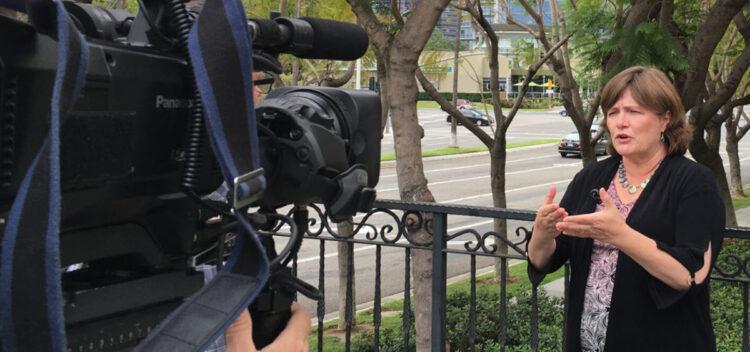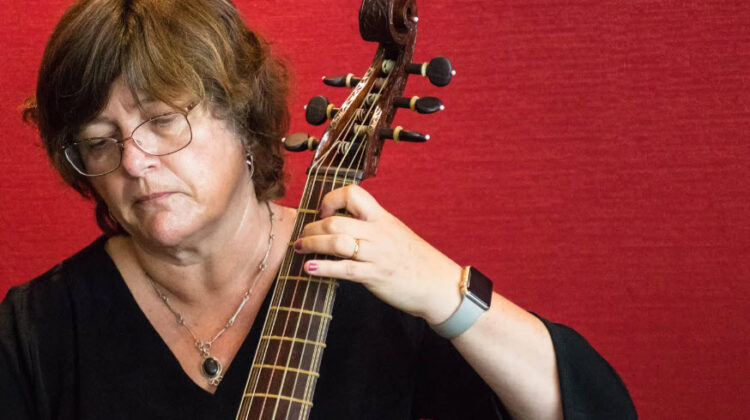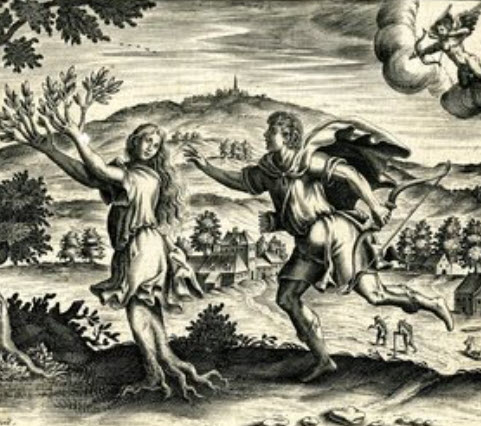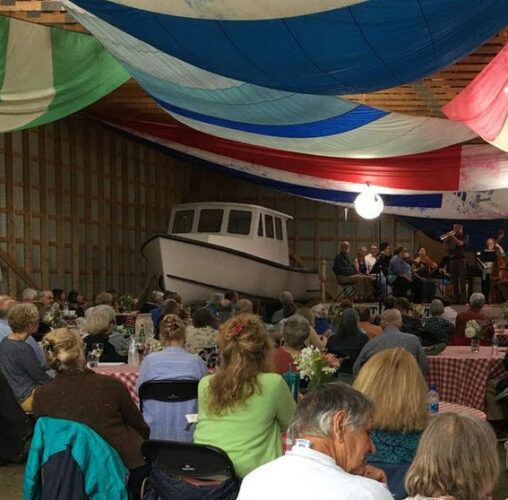by Donna Lee Davidson
Published January 8, 2024
Seismologist and viola da gambist Dr. Lucy Jones plays music to depict the science of global warming

If you’ve ever been in Southern California during an earthquake, you’ve probably seen Dr. Lucy Jones at work. Now a science advisor for the U.S. Geological Survey and researcher at Caltech, she’s the earthquake expert for TV news conferences. With her deep understanding of seismology, her brilliant scholarship on predictive fore- and after-shocks, her authorship of more than 100 peer-reviewed scientific papers, and a manner that can be calmingly matter-of-fact, she is known as “the Earthquake Lady.” She still gets fan mail from around the world and, at 69, has been advising the State of California on earthquake safety and preparedness for decades.
She also plays the viola da gamba and is a member of Los Angeles Baroque, a historically informed community orchestra.
More recently, she’s turned her attention to a calamity bigger than earthquakes: global warming and the climate crisis. Her non-profit organization draws on her public recognition: the Dr. Lucy Jones Center for Science and Society. As she told the Los Angeles Times in 2023, “I cannot justify pushing seismic safety if we aren’t going to deal with climate change.” An initiative she started, Tempo: Music for Climate Action, plays music to heighten awareness of the science of the climate crisis.
The idea started with a video Jones saw on YouTube of a cellist-composer who assigned the average global temperature for each year to one note. “It’s random; it’s not a melody, just a random set of chromatic notes,” she says of the video. But it inspired her to compose her own data awareness piece using four gambas. Trouble was, she wasn’t a composer. Just as many people wouldn’t remember how to solve a calculus equation decades after college, Jones admits that decades after taking a freshman music theory course in counterpoint her skills were a little hazy.
Nevertheless, she persisted. In 2013, she started her temperature data piece, In Nomine Terra Calens: The Warming of the Earth Since 1880, and it took her some seven years to complete. When she began the composition, she only needed three of the gamba’s three-and-a-half octave range. Later, she added the most recent five years of warming data to the piece, which added another half octave — going off the end of the fingerboard. The symbolism was potent.
A California native, born in Santa Monica, Jones grew up playing the cello in orchestra. It was in her last year as a high school senior — and while she and her family were living in Taiwan — that she got her first taste of chamber music. “The whole experience of a small ensemble really changed how I felt about music. I really loved it in a way I never loved orchestra,” Jones told me. As a Chinese major (while studying physics) at Brown University, she only had time for one music class: counterpoint, which also happened to be something of an intellectual tipping point toward music. It was “the one theory class I could fit in that was available at the right time,” Jones recalls. The class’ impact would only be realized decades later.
In 1972, David Josephson founded and directed the Brown Early Music Group. “Coming from a Welsh family, everybody played the recorder,” Jones says, so that’s what she brought to the group’s first meeting. But with a cello background, she was asked instead to play the viola da gamba and was given free lessons with musicians from the Boston Camerata and the New York Consort of Viols. “It was a way to stay involved with chamber music even though I wasn’t a music major. And once I discovered the 17th century, I never saw a reason to return to the 20th.”
In graduate school at MIT, studying geophysics, she didn’t play for a few years. “A lot of early music at that point [in the late ’70s] was like a society for creative anachronism — it was sort of being as weird as you could rather than being about the music,” she says after a long pause and some hesitation, as though she was searching for the most diplomatic way of explaining the time she took off from music. Only after she met a few early-music women from nearby Wellesley College did she return to the gamba. She got back to music and also found a community of women friends, neither of which was a common thing at MIT. “When I got my Ph.D., my first purchase was a bass viol, once I had money.”

An always-on-call career, marriage (her husband is also a seismologist), and two children later, Jones retired in 2016 from the U.S. Geological Survey after 33 years. That same year she founded her Dr. Lucy Jones Center. Its mission: “to activate the use of science in the creation of more resilient communities.”
And she started taking gamba lessons again. At the time, almost a decade ago, she recalls there might have been only one professional gamba teacher in the L.A. area. In 2019, she helped start SoCal Viols, the Southern California Chapter of the Viola da Gamba Society of America, which now boasts 40 dues-paying members. It’s during this time that Jones began to fuse two things in her life that have competed for time. Playing bass viol, Jones and Los Angeles Baroque performed In Nomine Terra Calens in 2019.
In a showcase of combining her two fields, music and geoscience, the Jones Center brought an ensemble and choir to the American Geophysical Union conference in December 2022. They performed music about climate change for 20,000 in-person and online earth scientists. “In science, there is, ideally, an objective standard of truth,” Jones says. “The data always wins in the end — or is supposed to win. There isn’t that in music.” But for now, we can at least know that Jones is, one gamba at a time, mapping out those changes. “My amateur music became a part of my scientific career in a way that’s pretty exciting.”
Donna Lee Davidson, a graduate of Spelman College, studied orchestra percussion at the Manhattan School of Music. She is a 2022 Rubin Institute for Music Criticism fellow and is currently pursuing an MFA at Columbia University.
Related stories: A guest editorial by viola da gamba player John Mark Rozendaal: “An Early-Music Climate Activist on Disrupting Performances” and “Community & Climate Change & Early Music”




